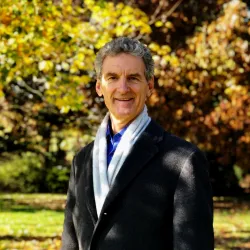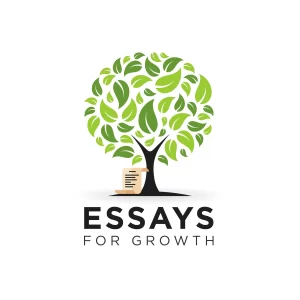What is Coaching?
Learn about the coaching process.
Free Updates + Exclusive Bonuses!
Receive a free copy of the Deep Learning Method.
+
Advance viewings of upcoming videos and essays.
+
Juicy insights delivered to your inbox weekly. No spam. Ever.
The Process

What is coaching? It’s a multi-faceted process, but it basically boils down to five things:
- Creating a compelling vision.
- Identifying inner and outer blocks.
- Resolving the blocks.
- Developing the action plan.
- Meeting every week, being held accountable, and adjusting the strategy as needed.
Let’s take a look at each step in closer detail.
Creating a Clear Vision

We begin by clarifying your vision. This means developing a detailed picture of what you want to achieve. This step is crucial because we use your vision to reverse-engineer the action plan.
At this stage, it’s all about exploration – figuring out what matters most to you and architecting a vision that expresses your highest values. In doing so, we ensure your pursuits provide deep meaning, fulfilment, and satisfaction.

Why is vision important? For one thing, your vision will ground you – knowing what you want in life provides a deep sense of inner peace.
Second, your vision will guide you. Having direction enables you to structure your days. You will know what actions you’re taking, when you’re taking them, and what outcome(s) your actions are intended to produce.
Third, your vision will give you focus. As you navigate life, there will be many distractions, traps, and pitfalls. A well-developed vision helps you avoid many of these.
Fourth, having a compelling vision will solve all of your motivation problems. Read that again. Take a moment to consider the value of that!
Fifth, a compelling vision gives your life meaning and a newfound depth and richness.
Finally, by clarifying your vision, you free yourself to move forward with confidence, dedication, and conviction.
Identifying Blocks

We organize blocks into two categories:
- Inner blocks.
- Outer blocks.
Inner blocks are psychological. These include, but are not limited to, limiting beliefs, low self-esteem, faulty paradigms, toxic values, fear, and lack of confidence.
Conversely, outer blocks are logistical. These include, but are not limited to, lack of capital, geographic limitations, lack of education, and even people, such as toxic friends or family members.

A key component of coaching is identifying and eliminating these blocks. We begin with the inner blocks because until these are dealt with, it will be extremely difficult – if not impossible – to execute the action plan.
Take, for example, a client who wants to get his love life in order. If this individual suffers from low self-esteem, no plan of action – no matter how sound – will be effective until his self-esteem issues are resolved. If we were to formulate a strategy and move straight to execution, his low self-esteem would continue to undermine his ability to prosper in his love life. It is imperative, therefore, to deal with the underlying self-esteem issues before we begin to strategize and take action.
Removing Inner Blocks

The nature of the inner block will determine the tools and methods used to remove it. Here is a brief description of what you can expect based on the blocks we identify:
Limiting Beliefs
A limiting belief is a notion you hold as true about yourself or reality which prevents you from achieving your goals. Limiting beliefs are pernicious, primarily due to two factors:
- We act according to our beliefs.
- Most of our beliefs are unconscious.

With that in mind, a tell-tale sign of limiting beliefs is chronic self-sabotage. For instance, if someone wants to get their finances in order but always needs help holding on to money, they likely have limiting beliefs surrounding personal finance.
The influence of our beliefs highlights why using willpower to create behaviour change is unsustainable. In the end, the unconscious wins every time. Sustainable change comes from inner work – changing the makeup of your psyche. Such change is accomplished, in part, by uprooting and replacing limiting beliefs.
As your coach, I will guide you through identifying these beliefs, releasing their hold on you, and replacing them with valid, constructive beliefs that help you move toward your goals.

Low Self-Esteem
Two factors contribute to high self-esteem:
- A strong sense of self-efficacy.
- A strong sense of self-worth.
Your sense of self-efficacy is confidence in your ability to produce successful outcomes. Your sense of self-worth is the degree to which you perceive yourself as someone of value.
One of the great things about this work is that the principles which govern the development of high self-esteem are inherent to the process; by committing to your growth, you will carry out the set of actions that build high self-esteem!

Faulty Paradigms
A paradigm is a mental model – a map of how something works. Similar to beliefs, our paradigms determine our actions and, by extension, the results we produce. The degree to which our paradigms align with reality will determine our success, whereas the degree to which our paradigms deviate from reality will determine our limitations.
Take, for example, a broken car engine. To repair it, you must understand how engines work – how to take them apart and put them back together. Your paradigm – your level of understanding – must permit you to produce the desired outcome.
This fundamental principle applies to every single area of your life: to produce success, you must develop the requisite understanding. This advice may seem painfully obvious, but to quote Stephen Covey: “What is common sense is not always common practice.”
As your coach, I will help you cultivate this understanding through teachings, resources, and facilitation of independent discovery, all of which will be instrumental in actualizing your vision and achieving desired results.

Toxic Values
What’s important to you? Status? Power? Recognition? Physical appearance? Money? Sex?
These are examples of toxic values. It’s important to note there is nothing inherently wrong with these. I’m not suggesting these values are bad or that we should avoid them. In fact, I pursue many of them.
The issue is when we pursue these values in the hope that they will bring happiness, fulfilment, and satisfaction. To a certain extent, these things improve our quality of life. But once we pass a certain point, no matter how much more we acquire, they will never fulfill us.

Instead, we want to make our life an expression of high-consciousness values.
Beauty. Truth. Justice. Intimacy. Fun. Joy. Adventure. Humour. Health. Integrity. Honesty. Contribution. Impact. Purpose. Growth. Love.
These are examples of high-consciousness values (also called higher virtues). These values produce the deep meaning, fulfilment, and satisfaction we crave.
The great figures of history are those who embodied higher virtues. It is profitable to study individuals such as Gandhi, Abraham Lincoln, Leonardo da Vinci, and Albert Einstein, to name a few. In doing so, you will grasp the importance of making your life an expression of high-consciousness values.
A great quote from Dr. Cornel West underscores the importance of embodying higher virtues. I paraphrase:
“We do not remember the richest nor the most powerful. Rather, we remember the greatest.”
Notice that greatness is rooted in higher virtues. This insight will become one of your guiding principles.

Now the question remains, what are your highest values? What drives you at your core? Most people have yet to learn what’s important to them, so they remain ignorant about what they should pursue. This lack of awareness is one of the primary reasons most people are stuck and accounts for why happiness and fulfilment are so elusive.
As your coach, I will guide you through a rigorous process to clarify your highest values. Your values serve as your unique blueprint for happiness and fulfilment. Ask yourself: how valuable would it be to possess this blueprint?

Once we clarify your values, we devise a strategy to align your life with them. By executing the plan, your life becomes an expression of what is most important to you, producing a deep sense of meaning.
Earlier I mentioned that we use our vision to reverse-engineer the action plan. What I propose to you now is that we use our values to reverse-engineer our vision. In light of this, it becomes abundantly clear how important your highest values will be in building the life of your dreams.
Your values are the core of your being, and we will work to uncover them, define them, and actualize them in your life.

Fear
Fear is an important emotion that plays a crucial role in our survival. The experience of fear facilitates a fight-or-flight response, allowing us to navigate threats. However, when it comes to our growth, fear can paralyze us.
Within the context of personal development, the constructive approach to fear (generally speaking) is twofold:
- Reframe the fear as an indication you are going in the right direction.
- Lean into your fear.
I like to think of fear as a membrane, and the more I lean into it, the more the membrane gives way until I push through to the other side. In doing so, I find what I desire.
To quote Jack Canfield:
“Everything you want is on the other side of fear.“
To quote Joseph Campbell:
“The cave you fear to enter holds the treasure you seek.”
When you’re working on yourself, and you notice fear arise, take that as an indication you’re moving in the right direction. Then do the thing that scares you.
Developing the Action Plan

Once we resolve the inner blocks, we move to action planning. It is paramount at this stage to implement the principles of strategic thinking, which are as follows:
- Strategic intent.
- Strategic analysis.
- Strategic preparation – gathering your resources.
- Concentration of force.
- Disciplined execution.
- Adaptability.
- Study of general principles.
I outline each principle in greater detail below and provide examples of our actions at each stage.

Strategic Intent
Strategic intent means having a clear vision of what you want to accomplish. As I mentioned, we can only strategize once we know our objective.
Strategic Analysis
Strategic analysis refers to assessing your strengths, weaknesses, available resources, and opportunities. We also identify potential roadblocks that could stand in your way.
Furthermore, we anticipate how you might stand in your way – how your mind will attempt to dissuade you from changing.

Strategic Preparation
In the preparation stage, we identify the resources you will need and how you will acquire them.
Resources include, but are not limited to, time, energy, habits, connections, money, knowledge, and skills.

Concentration of Force
Once you acquire the necessary resources, the next step is determining where to concentrate them.
Your resources are limited. If you spread them over too many pursuits, there will be no forward mobility. Instead, you must identify the small handful of objectives to invest your time, money, energy, and skills into and then pursue those objectives relentlessly.
Execution
As the name suggests – it’s time to take action!

Adaptability
Circumstances change. You must be flexible enough to revise your strategy in response to the evolving landscape.
Your plan is dynamic rather than static. The fluid nature of strategy underscores the importance of weekly sessions. Together we assess the feedback you receive as you put your plan into action, and then we make the necessary changes to keep you on track.

The Study of Principles
The final principle is the study of principles. A principle is a fundamental law which governs success in a given domain of life. For instance, a principle of relationship success is healthy communication.
Throughout all your efforts to grow and self-actualize, you must continue to study and implement fundamental principles. This practice will be vital for executing your strategy and achieving desired results.
The Weekly Meeting

Clients typically meet with their coach once per week. The purpose of each session is to:
- Check in on progress and be held accountable for follow-through.
- Adapt the strategy in response to new feedback, information, and developments.
- Identify new blocks and release them.
- Identify new challenges and produce strategies to overcome them.
- Identify new learnings and insights, and determine how to put them into practice.
Coaching sessions also allow clients to discuss sensitive matters with an objective third party in a confidential, non-judgmental space.
The Time Is Now

Now that you’re familiar with the coaching process, it’s time to take action. Whether looking to deepen your relationships, discover your life purpose, improve your health, or grow in any other domain, hiring a skilled coach can mean the difference between success and failure.
Your mind will want to procrastinate. See through this trickery. Decide to be one of those people who pull it off, whatever “it” is for you. I can help you get there. Click the button below to get started.
The Process
What is coaching? It’s a multi-faceted process, but it basically boils down to five things:
- Creating a compelling vision.
- Identifying inner and outer blocks.
- Resolving the blocks.
- Developing the action plan.
- Meeting every week, being held accountable, and adjusting the strategy as needed.
Let’s take a look at each step in closer detail.

Creating a Clear Vision
We begin by clarifying your vision. This means developing a detailed picture of what you want to achieve. This step is crucial because we use your vision to reverse-engineer the action plan.
At this stage, it’s all about exploration – figuring out what matters most to you and architecting a vision that expresses your highest values. In doing so, we ensure your pursuits provide deep meaning, fulfilment, and satisfaction.
Why is vision important? For one thing, your vision will ground you – knowing what you want in life provides a deep sense of inner peace.
Second, your vision will guide you. Having direction enables you to structure your days. You will know what actions you’re taking, when you’re taking them, and what outcome(s) your actions are intended to produce.
Third, your vision will give you focus. As you navigate life, there will be many distractions, traps, and pitfalls. A well-developed vision helps you avoid many of these.
Fourth, having a compelling vision will solve all of your motivation problems. Read that again. Take a moment to consider the value of that!
Fifth, a compelling vision gives your life meaning and a newfound depth and richness.
Finally, by clarifying your vision, you free yourself to move forward with confidence, dedication, and conviction.


Identifying Blocks
We organize blocks into two categories:
- Inner blocks.
- Outer blocks.
Inner blocks are psychological. These include, but are not limited to, limiting beliefs, low self-esteem, faulty paradigms, toxic values, fear, and lack of confidence.
Conversely, outer blocks are logistical. These include, but are not limited to, lack of capital, geographic limitations, lack of education, and even people, such as toxic friends or family members.
A key component of coaching is identifying and eliminating these blocks. We begin with the inner blocks because until these are dealt with, it will be extremely difficult – if not impossible – to execute the action plan.
Take, for example, a client who wants to get his love life in order. If this individual suffers from low self-esteem, no plan of action – no matter how sound – will be effective until his self-esteem issues are resolved. If we were to formulate a strategy and move straight to execution, his low self-esteem would continue to undermine his ability to prosper in his love life. It is imperative, therefore, to deal with the underlying self-esteem issues before we begin to strategize and take action.


Removing Inner Blocks
The nature of the inner block will determine the tools and methods used to remove it. Here is a brief description of what you can expect based on the blocks we identify:
Limiting Beliefs
A limiting belief is a notion you hold as true about yourself or reality which prevents you from achieving your goals. Limiting beliefs are pernicious, primarily due to two factors:
- We act according to our beliefs.
- Most of our beliefs are unconscious.
With that in mind, a tell-tale sign of limiting beliefs is chronic self-sabotage. For instance, if someone wants to get their finances in order but always needs help holding on to money, they likely have limiting beliefs surrounding personal finance.
The influence of our beliefs highlights why using willpower to create behaviour change is unsustainable. In the end, the unconscious wins every time. Sustainable change comes from inner work – changing the makeup of your psyche. Such change is accomplished, in part, by uprooting and replacing limiting beliefs.
As your coach, I will guide you through identifying these beliefs, releasing their hold on you, and replacing them with valid, constructive beliefs that help you move toward your goals.
Low Self-Esteem
Two factors contribute to high self-esteem:
- A strong sense of self-efficacy.
- A strong sense of self-worth.
Your sense of self-efficacy is confidence in your ability to produce successful outcomes. Your sense of self-worth is the degree to which you perceive yourself as someone of value.
One of the great things about this work is that the principles which govern the development of high self-esteem are inherent to the process; by committing to your growth, you will carry out the set of actions that build high self-esteem!
Faulty Paradigms
A paradigm is a mental model – a map of how something works. Similar to beliefs, our paradigms determine our actions and, by extension, the results we produce. The degree to which our paradigms align with reality will determine our success, whereas the degree to which our paradigms deviate from reality will determine our limitations.
Take, for example, a broken car engine. To repair it, you must understand how engines work – how to take them apart and put them back together. Your paradigm – your level of understanding – must permit you to produce the desired outcome.
This fundamental principle applies to every single area of your life: to produce success, you must develop the requisite understanding. This advice may seem painfully obvious, but to quote Stephen Covey: “What is common sense is not always common practice.”
As your coach, I will help you cultivate this understanding through teachings, resources, and facilitation of independent discovery, all of which will be instrumental in actualizing your vision and achieving desired results.
Toxic Values
What’s important to you? Status? Power? Recognition? Physical appearance? Money? Sex?
These are examples of toxic values. It’s important to note there is nothing inherently wrong with these. I’m not suggesting these values are bad or that we should avoid them. In fact, I pursue many of them.
The issue is when we pursue these values in the hope that they will bring happiness, fulfilment, and satisfaction. To a certain extent, these things improve our quality of life. But once we pass a certain point, no matter how much more we acquire, they will never fulfill us.
Instead, we want to make our life an expression of high-consciousness values.
Beauty. Truth. Justice. Intimacy. Fun. Joy. Adventure. Humour. Health. Integrity. Honesty. Contribution. Impact. Purpose. Growth. Love.
These are examples of high-consciousness values (also called higher virtues). These values produce the deep meaning, fulfilment, and satisfaction we crave.
The great figures of history are those who embodied higher virtues. It is profitable to study individuals such as Gandhi, Abraham Lincoln, Leonardo da Vinci, and Albert Einstein, to name a few. In doing so, you will grasp the importance of making your life an expression of high-consciousness values.
A great quote from Dr. Cornel West underscores the importance of embodying higher virtues. I paraphrase:
“We do not remember the richest nor the most powerful. Rather, we remember the greatest.”
Notice that greatness is rooted in higher virtues. This insight will become one of your guiding principles.
Now the question remains, what are your highest values? What drives you at your core? Most people have yet to learn what’s important to them, so they remain ignorant about what they should pursue. This lack of awareness is one of the primary reasons most people are stuck and accounts for why happiness and fulfilment are so elusive.
As your coach, I will guide you through a rigorous process to clarify your highest values. Your values serve as your unique blueprint for happiness and fulfilment. Ask yourself: how valuable would it be to possess this blueprint?
Once we clarify your values, we devise a strategy to align your life with them. By executing the plan, your life becomes an expression of what is most important to you, producing a deep sense of meaning.
Earlier I mentioned that we use our vision to reverse-engineer the action plan. What I propose to you now is that we use our values to reverse-engineer our vision. In light of this, it becomes abundantly clear how important your highest values will be in building the life of your dreams.
Your values are the core of your being, and we will work to uncover them, define them, and actualize them in your life.
Fear
Fear is an important emotion that plays a crucial role in our survival. The experience of fear facilitates a fight-or-flight response, allowing us to navigate threats. However, when it comes to our growth, fear can paralyze us.
Within the context of personal development, the constructive approach to fear (generally speaking) is twofold:
- Reframe the fear as an indication you are going in the right direction.
- Lean into your fear.
I like to think of fear as a membrane, and the more I lean into it, the more the membrane gives way until I push through to the other side. In doing so, I find what I desire.
To quote Jack Canfield:
“Everything you want is on the other side of fear.“
To quote Joseph Campbell:
“The cave you fear to enter holds the treasure you seek.”
When you’re working on yourself, and you notice fear arise, take that as an indication you’re moving in the right direction. Then do the thing that scares you.









Developing the Action Plan
Once we resolve the inner blocks, we move to action planning. It is paramount at this stage to implement the principles of strategic thinking, which are as follows:
- Strategic intent.
- Strategic analysis.
- Strategic preparation – gathering your resources.
- Concentration of force.
- Disciplined execution.
- Adaptability.
- Study of general principles.
I outline each principle in greater detail below and provide examples of our actions at each stage.
Strategic Intent
Strategic intent means having a clear vision of what you want to accomplish. As I mentioned, we can only strategize once we know our objective.
Strategic Analysis
Strategic analysis refers to assessing your strengths, weaknesses, available resources, and opportunities. We also identify potential roadblocks that could stand in your way.
Furthermore, we anticipate how you might stand in your way – how your mind will attempt to dissuade you from changing.
Strategic Preparation
In the preparation stage, we identify the resources you will need and how you will acquire them.
Resources include, but are not limited to, time, energy, habits, connections, money, knowledge, and skills.
Concentration of Force
Once you acquire the necessary resources, the next step is determining where to concentrate them.
Your resources are limited. If you spread them over too many pursuits, there will be no forward mobility. Instead, you must identify the small handful of objectives to invest your time, money, energy, and skills into and then pursue those objectives relentlessly.
Execution
As the name suggests – it’s time to take action!
Adaptability
Circumstances change. You must be flexible enough to revise your strategy in response to the evolving landscape.
Your plan is dynamic rather than static. The fluid nature of strategy underscores the importance of weekly sessions. Together we assess the feedback you receive as you put your plan into action, and then we make the necessary changes to keep you on track.
The Study of Principles
The final principle is the study of principles. A principle is a fundamental law which governs success in a given domain of life. For instance, a principle of relationship success is healthy communication.
Throughout all your efforts to grow and self-actualize, you must continue to study and implement fundamental principles. This practice will be vital for executing your strategy and achieving desired results.






The Weekly Meeting
Clients typically meet with their coach once per week. The purpose of each session is to:
- Check in on progress and be held accountable for follow-through.
- Adapt the strategy in response to new feedback, information, and developments.
- Identify new blocks and release them.
- Identify new challenges and produce strategies to overcome them.
- Identify new learnings and insights, and determine how to put them into practice.
Coaching sessions also allow clients to discuss sensitive matters with an objective third party in a confidential, non-judgmental space.

The Time Is Now
Now that you’re familiar with the coaching process, it’s time to take action. Whether looking to deepen your relationships, discover your life purpose, improve your health, or grow in any other domain, hiring a skilled coach can mean the difference between success and failure.
Your mind will want to procrastinate. See through this trickery. Decide to be one of those people who pull it off, whatever “it” is for you. I can help you get there. Click the button below to get started.

Therapy vs. Coaching
It is important to understand that coaching is not therapy. I outline the distinctions and similarities below.
Therapy
The primary focus of therapy is to bring an individual from a state of dysfunction to a state of function. Therapists help clients become functional by assessing for, diagnosing, and treating mental health disorders such as PTSD, OCD, depression, and anxiety. Furthermore, therapy involves addressing and resolving past trauma. Therapists will often explore traumatic experiences with their clients to gain insight into why a client behaves as they do and how their past has shaped their present.
Looking at Maslow’s Hierarchy of Needs, therapists address safety needs by helping clients to stabilize their mental health.
Coaching
The primary focus of coaching is to elevate clients from a state of function to a state of thriving. Looking at Maslow’s Hierarchy of Needs, coaches help clients with social, esteem, and self-actualization needs. This involves, but is not limited to, improving one’s relationships, clarifying and accomplishing goals, developing mastery, cultivating self-understanding, embodying high-consciousness values, creative expression, personal growth, and life purpose.
Coaches partner with clients to eliminate blocks and develop strategies. Coaches also provide resources and teachings to facilitate growth in various life domains. These domains include but are not limited to health, finances, career, and relationships.
Overlap
Both therapy and coaching create a safe and confidential space where clients can share intimate thoughts, feelings, and circumstances with a neutral, non-judgmental third party. Coaches and therapists listen, validate feelings, and, when appropriate, provide deeper insight into the client’s circumstances. Finally, coaches and therapists facilitate exploration into a client’s past and present to produce insight that can translate into lasting behaviour change.
FAQ
Q: How long is a coaching session?
A: 60 minutes.
Q: Do you have a refund policy?
A: Yes. If you are not satisfied, inform me after our first session and I will refund the remaining sessions.
Q: What is your cancellation policy?
A: To reschedule without charge, please provide a minimum of 24 hours notice.
Q: Is what we discuss confidential?
A: Yes. As a coach, I adhere to the same confidentiality standards as a therapist. That said, there are four conditions where confidentiality may be broken:
- A court subpoenas me.
- You disclose you may harm yourself or others.
- There is suspicion of child abuse or neglect.
- You provide written consent to disclose some or all the contents of a specific session(s).
Q: Do I need therapy or coaching?
A: To determine which helping modality is best for you, please consult my write-up on therapy vs. coaching here.
Q: What if I pay for coaching and don’t see any benefit?
A: By attending your sessions and completing the assigned work, you will see benefit. Remember: the more you put into our time together, the more you will get out of it.
Q: How long will it take for me to start seeing results?
A: That depends on your challenge(s). The greater the challenge, the longer the time horizon. As a general rule, be mentally prepared for a three-month commitment. However, the nature of coaching is such that progress begins in the first session. In the initial sessions, examples of progress include increased clarity, releasing blocks, acquiring new resources and teachings, and developing concrete action steps to move you toward your goals.
Q: How often do I need to attend coaching sessions?
A: I recommend attending one session per week. This frequency provides enough time between sessions to complete assignments while being consistent enough to build and sustain momentum.
Q: What does your CPC credential mean?
A: The designation of Certified Professional Coach is awarded to those who complete an accredited coach training program. Accredited programs require over 200 hours of training and exams. I received my designation from one of the top coach training programs in the world, iPEC. While certification does not guarantee a great coach, it does ensure a baseline competency.
Q: Do you coach couples?
A: Yes.
Q: Do you coach children or adolescents?
A: I coach people 13 and older.
Q: Do you coach people in therapy?
A: Yes. As long as your mental health permits, we can work together.
Q: What forms of payment do you accept?
A: I accept payment from any major credit card via Square or e-transfer.
Q: When is payment made?
A: For a breakdown of my pricing structure, click here.
Q: Do you take medical insurance?
A: No. Very few, if any, insurance policies cover coaching.
Q: Do you coach other coaches?
A: Yes.
Q: What happens if I don’t complete my assignments or do what I say I will do?
A: Don’t worry, you won’t be in trouble 😉 If you don’t follow through, that allows us to explore what’s happening beneath the surface.
Testimonials





